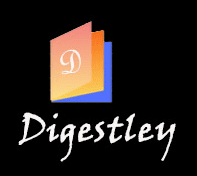Uniforms and branded apparel have long been part of professional environments, but in real estate and property management they hold a particular weight. A resident’s first impression of a building often comes from the staff member greeting them at the front desk, the maintenance technician responding to a service request, or the security guard patrolling common areas. In these moments, apparel communicates authority, reliability, and professionalism. For property management companies, decisions about how to brand staff clothing can affect not only perception but also team morale and operational consistency.
Two of the most widely used methods are custom screen printing and custom embroidery, each bringing different strengths to staff apparel programs. Understanding how these approaches fit into the context of property management is essential, as teams must weigh factors such as durability, cost, aesthetics, and brand alignment.
Table of Contents
The Role of Apparel in Property Management
Property management involves a wide spectrum of responsibilities, from tenant relations and leasing to maintenance, security, and facility upkeep. Staff members across these functions often interact directly with tenants, contractors, or prospective buyers, which makes their appearance a silent but powerful communicator.
Apparel creates cohesion within teams and ensures that residents and visitors can easily identify employees. In a high-traffic apartment complex or commercial building, knowing who belongs to the management staff adds a sense of order and trust. For security personnel, uniforms can deter unwanted behavior simply by establishing authority. For maintenance staff, protective and branded apparel ensures both safety and recognition when moving through common areas.
The challenge for management companies is selecting apparel that balances professionalism with practical needs. Property managers may want sharp, polished looks for leasing agents while favoring rugged, durable clothing for maintenance crews. A single property often requires multiple styles, which is where personalized screen printing, custom shirt printing, and embroidered designs come into play.
Screen Printing in a Property Management Context
Screen printing is a process in which ink is applied directly onto fabric through a mesh stencil, creating bold, eye-catching designs. In property management, this method is most often used for casual team shirts, promotional apparel, or large staff events.
The advantage lies in its ability to handle vibrant colors and large graphics, which is ideal for logos or event branding. If a management company hosts a resident appreciation day or community clean-up, shirts with bold logos produced through custom shirt printing create a strong sense of unity and visibility. Screen printing is also well-suited for high-volume orders, making it cost-effective when outfitting large maintenance or cleaning crews.
However, there are trade-offs. Screen printing is less durable on heavy fabrics like jackets or polos, where frequent washing can fade or crack designs. It also lacks the textured, upscale finish of embroidery, which may be more appropriate for front-facing staff. Managers must balance cost against long-term appearance, particularly when uniforms are a core part of daily operations.
Embroidery and Its Professional Appeal
Embroidery takes a different approach, stitching logos or text directly into the fabric. The result is long-lasting and textured, giving uniforms a polished, high-end look. In property management, personalized embroidery is often chosen for leasing office staff, security personnel, or any role where direct tenant engagement is constant.
A polo with a company logo stitched neatly on the chest conveys authority and professionalism that a printed logo may not achieve. Embroidery also withstands frequent laundering, which is important for uniforms that must look sharp day after day. For corporate offices or premium properties, custom embroidered shirts create a sense of prestige and align with expectations of tenants who are paying premium rents.
The main challenge is cost. Embroidery typically costs more per piece than screen printing, especially for large or intricate designs. It also works best on thicker fabrics, limiting its flexibility for certain apparel types. For large crews that require frequent uniform replacement, this may not be the most budget-friendly option.
Balancing Practical and Aesthetic Needs
The core decision property management teams face is balancing the professional polish of embroidery with the bold affordability of screen printing. Neither method is universally better; instead, each serves a role depending on context.
- Front Office and Leasing Staff: Here, appearance carries a high value. Custom embroidered shirts or polos communicate reliability and professionalism, which can reassure prospective tenants during tours.
- Maintenance and Janitorial Teams: Durability and cost efficiency matter more. Personalized screen printing works well for t-shirts or sweatshirts that are subject to wear, dirt, and frequent washing.
- Security Personnel: A hybrid approach may work best. Embroidered patches on uniforms can convey authority, while screen printed reflective gear can boost visibility.
- Events and Promotions: Screen printing offers flexibility for temporary campaigns such as community events or giveaways, while embroidery may be excessive for short-term apparel.
The trade-off often lies in striking a balance across departments. Companies must decide whether to invest in a tiered approach, allocating embroidery for visible staff roles while reserving screen printing for functional teams.
Challenges in Implementation
While the advantages of personalized screen printing and embroidery are clear, property management teams face unique challenges in execution.
- Consistency Across Properties
A management company that oversees multiple locations must ensure that branding remains consistent. Differences in logo placement, color, or design style can dilute brand identity. Coordinating with suppliers to establish templates is critical. - Durability vs. Replacement Costs
Maintenance teams may require new uniforms more frequently due to wear and tear. Screen printed shirts may lose vibrancy, while embroidered polos are costlier to replace. Managers must weigh the long-term financial implications. - Tenant Expectations
Properties that market themselves as premium or luxury developments cannot afford staff apparel that appears cheap or inconsistent. Embroidery is often expected in such environments, but it raises costs across the board. - Staff Comfort and Functionality
Uniforms must balance appearance with comfort. A security guard on night patrol requires breathable fabrics, while a leasing consultant may prioritize appearance during tenant tours. The decoration method must fit within these practical requirements. - Vendor Reliability
Ensuring quality across multiple orders requires choosing vendors who can consistently deliver accurate colors, stitching, and printing. Delays in uniform production can disrupt operations, especially when onboarding new staff.
The Branding Impact
Beyond practicalities, the decision between custom shirt printing and personalized embroidery carries significant branding weight. Tenants and visitors may not consciously evaluate uniforms, but the overall impression of professionalism is shaped by what staff wear.
A cohesive uniform program signals organization and care, traits that tenants expect from those managing their homes or workplaces. Inconsistent or worn-out apparel can raise doubts about a property’s overall upkeep. Conversely, high-quality apparel demonstrates that management invests in details, reinforcing tenant trust.
Brand alignment is particularly crucial in competitive real estate markets. Properties often differentiate themselves through service and presentation rather than amenities alone. A leasing office outfitted with polished, embroidered uniforms can subtly elevate a brand’s perceived value.
Cost Considerations
Cost is one of the most pressing factors in uniform decisions. Screen printing typically carries a lower upfront cost, especially in bulk, making it appealing for large crews. Embroidery costs more per item but offers durability that can offset replacement expenses over time.
Another consideration is order flexibility. Screen printing allows for small batch orders at lower per-item costs, which can be useful when replacing individual uniforms. Embroidery, on the other hand, often involves higher setup costs, making it more efficient for larger, consistent orders.
Companies must calculate not only the immediate outlay but also the long-term cycle of replacement, staff turnover, and property branding needs. A cost-benefit analysis that considers both financial and branding implications can guide decision-making.
Sustainability and Modern Expectations
Increasingly, tenants and corporations are attentive to sustainability practices. Apparel choices can reflect a property management company’s value.
Screen printing traditionally uses plastisol inks, which can have environmental drawbacks, although eco-friendly water-based inks are now more widely available. Embroidery tends to have a smaller environmental footprint in terms of chemical usage but may generate more fabric waste.
Companies must also consider the durability factor. Uniforms that last longer reduce overall consumption and waste. Highlighting eco-conscious apparel decisions can even become part of a property’s branding, appealing to environmentally aware tenants.
The Human Factor: Staff Morale
Uniform programs also affect employee morale. Staff members who feel comfortable and confident in their uniforms are more likely to present themselves positively to tenants. Poorly designed or uncomfortable apparel can have the opposite effect, reducing enthusiasm for wearing uniforms.
Embroidery often carries prestige, which can boost pride among leasing or security staff. Maintenance staff, however, may prefer lightweight, breathable screen-printed shirts during physically demanding tasks. Soliciting staff input before finalizing uniform choices can improve adoption and satisfaction.
Technology and Evolving Practices
Technology has made both methods more versatile. Personalized screen printing can now handle more detailed designs than before, while embroidery machines are faster and more precise. Online ordering portals allow management companies to streamline reordering and ensure consistency across properties.
Digital design previews reduce errors, ensuring logos appear correctly across different fabrics. Companies can even integrate uniform ordering with HR systems, simplifying onboarding. These advancements lower some of the logistical challenges while providing more flexibility in apparel programs.
Strategic Recommendations for Property Management Companies
Given the factors involved, companies can benefit from adopting a layered approach to apparel:
- Use embroidered polos or jackets for front-facing staff, ensuring a professional image.
- Deploy screen printed tees or sweatshirts for maintenance and cleaning crews, prioritizing comfort and affordability.
- Combine embroidered patches with reflective screen-printed gear for security teams, balancing authority with visibility.
- Allocate event budgets for custom shirt printing, producing bold, low-cost apparel for resident engagement activities.
This strategy ensures that each department receives apparel suited to its function, while maintaining a cohesive brand identity across properties.
Final Thoughts
For property management teams, apparel is more than clothing; it reflects brand, professionalism, and operational priorities. Both custom embroidery and custom screen-printing offer valuable benefits, but their effectiveness depends on context.
The challenge lies in balancing costs, durability, aesthetics, and staff comfort. Decisions must consider not only how apparel affects tenants’ first impressions but also how it impacts staff morale and long-term replacement cycles. Personalized embroidery delivers polish and professionalism, while personalized screen printing provides flexibility and affordability.
Ultimately, successful apparel programs recognize that one method cannot address every need. A strategic blend, tailored to the unique demands of property management teams, ensures that staff members not only look professional but also feel supported in their roles. By carefully weighing trade-offs and aligning choices with brand identity, property management companies can turn uniforms into subtle but powerful assets in tenant relations and overall property success.
















